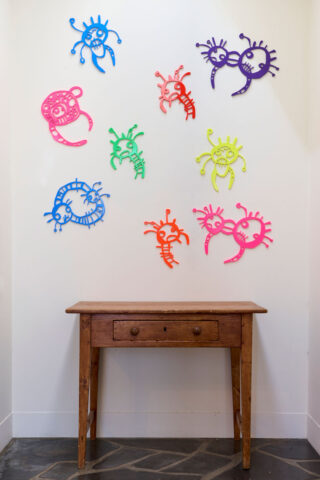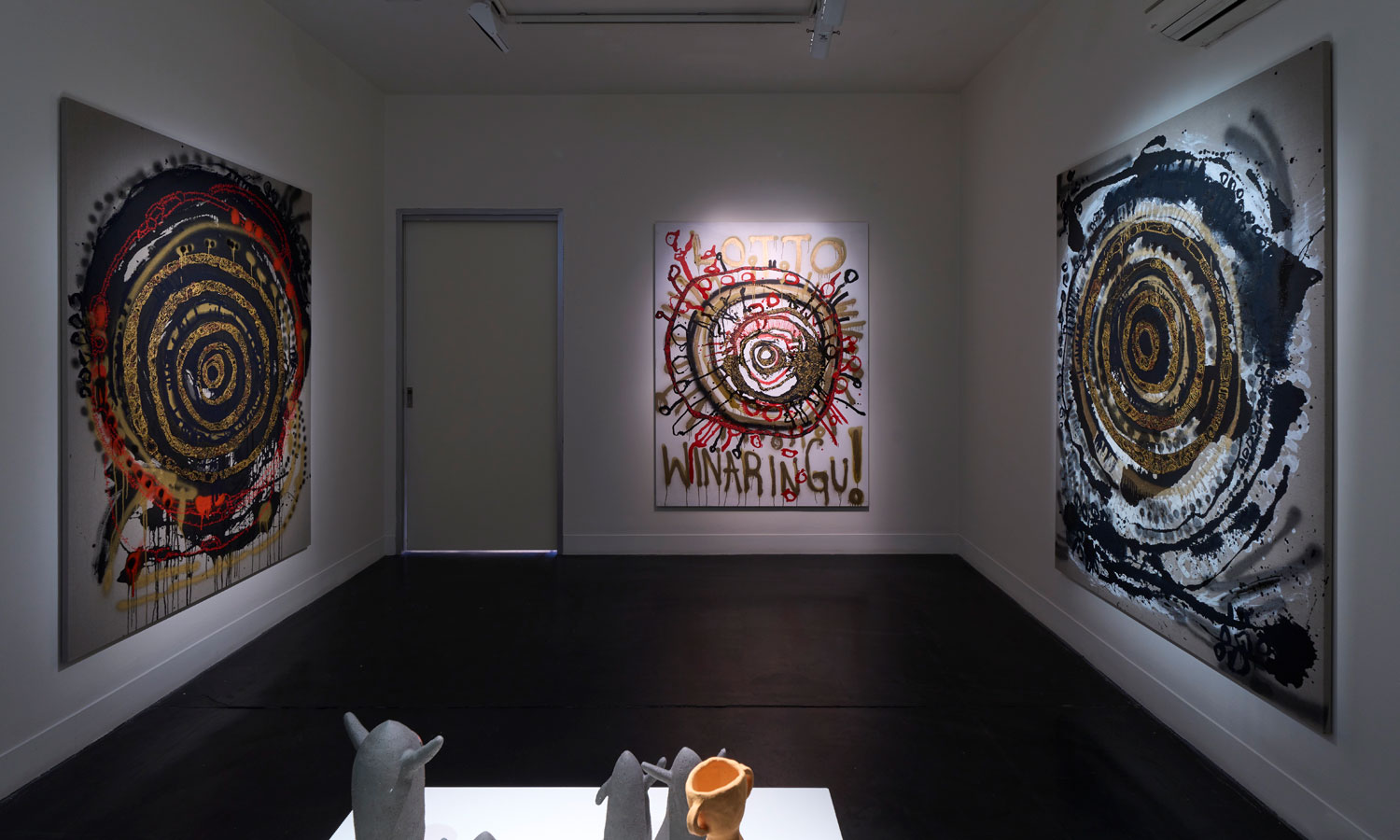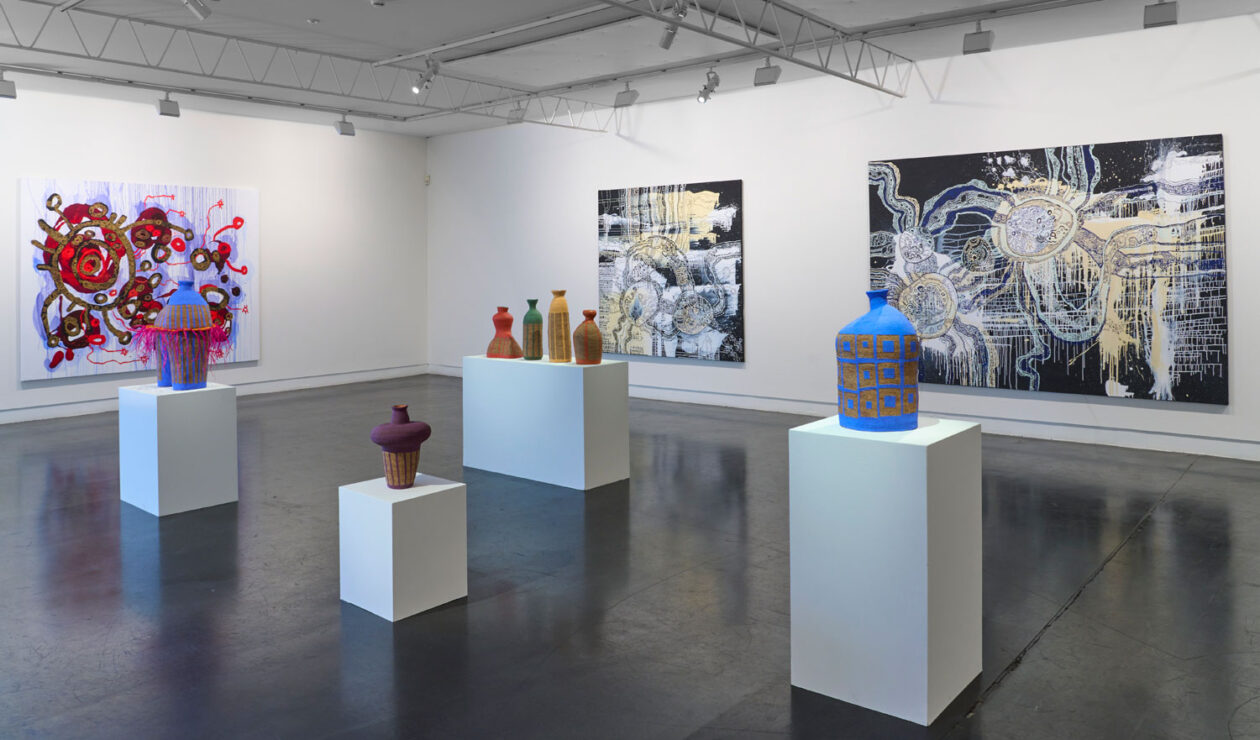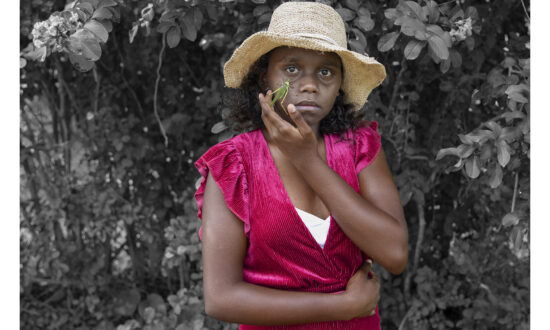Z munu A Titutjara (Z and A Forever)
Hugo Michell Gallery
Stepping into the gallery at Hugo Michell, visitors are greeted by a wall of small laser-cut aluminium figures called Gremlins by Zaachariaha Fielding, from APY Art Centre Collective’s Adelaide studio. They trigger the haunting whimsy of the late Ernabella artist Nura Rupert, the figures of American artist Keith Haring, and depictions of rather cute devils from early second millennium Christian art – an appeal that makes you want to take them home and play with them.

Zaachariaha Fielding’s ‘Gremlins’ in Z munu A Titutjara. Photo: Sam Roberts / supplied
And then a jump to the left into the main gallery – spectacular glazed ceramic forms by Alfred Lowe, an Arrernte artist from Snake Well in the Central Desert north of Alice Springs / Mparntwe, fill the floor plinths with bold colours, patterns, and shapes. The earthenware of the ceramics has a modernist “look” that is also ultra-contemporary Aboriginal art.
The walls are awash with large, confident and well-executed paintings by Fielding. I was drawn to a display of three works on the northern wall that depict song lines interpolated with text gleaned from studio chatter at the APY Studio in Thebarton.
Although artists are the default truth of their own story, within the accompanying essay (by Jane Llewellyn) Fielding appears apprehensive of ethnicity, gender, and sexuality labels – emitting more a shyness than an outgrowing of assigned labels. The dismissal of cultural identification appears to me contrary to the immense power and confidence that the works of art clearly possess. For me, they are e-ver-y-thing – amplifying what had been quietened, what always was always has been with their powerful presence.

Z munu A Titutjara: ‘The walls are awash with large, confident and well-executed paintings by Zaachariaha Fielding.’ Photo: Sam Roberts / supplied
Critic John McDonald was scathing of Fielding’s recent win of the 2023 Wynne Prize in his review in the Sydney Morning Herald, likening his accomplishment as akin to the artist “winning the lottery”, suggesting that he had not “earned it”. For me, this exemplifies the trope of the “green-eyed monster”, a “gremlin” if you like, that some western-educated critics and artists seem to feel when non-western schooled artists gain recognition – that they are somehow stealing the dreams of others. However, sometimes young artists – and older ones, too – can take to making great art naturally without formal western education. Sometimes their knowledge is learned from other spaces. The works in Z munu A Titutjara not only bite, but clap back.
In the rear of the building, within the smaller gallery space, are a few works made in collaboration, creating a challenging conjoining of artistic expression from artists of at least two different Aboriginal cultures that some audiences (including critics) may find challenging, preferring culture and those who express it to be “untainted” and “pure”.
The Z munu A Titutjara exhibition is at Hugo Michell Gallery until November 11 as part of the 2023 Tarnanthi Festival. Read more Tarnanthi stories and reviews here.
Support local arts journalism
Your support will help us continue the important work of InReview in publishing free professional journalism that celebrates, interrogates and amplifies arts and culture in South Australia.
Donate Here




